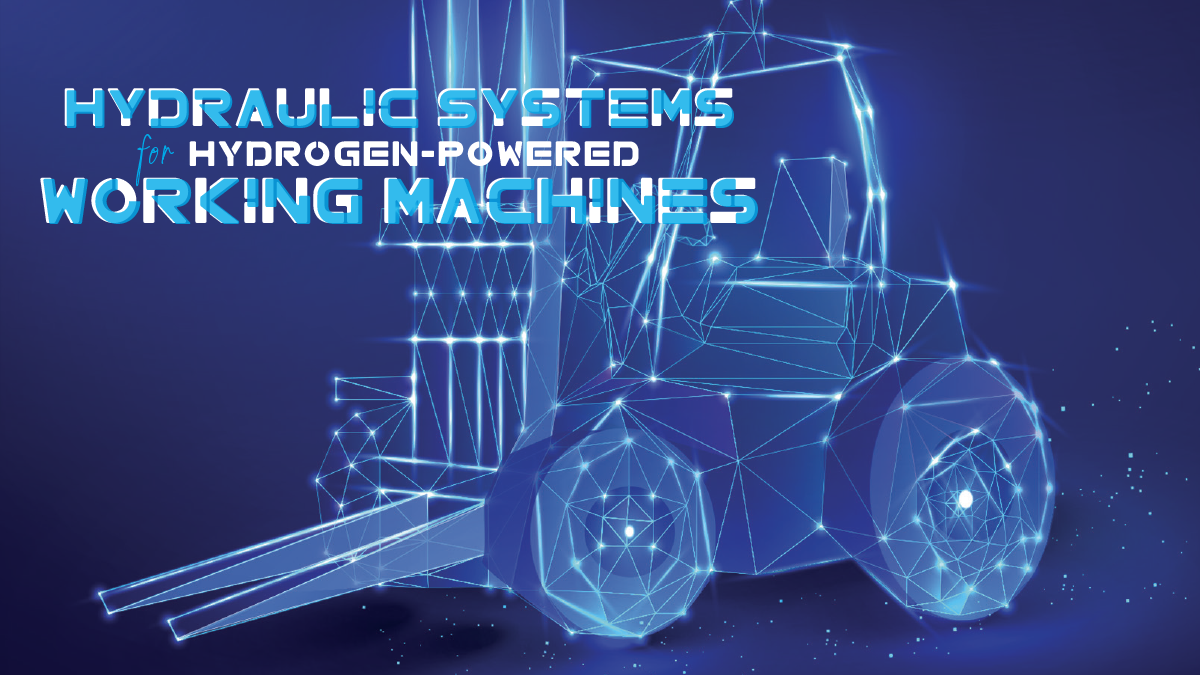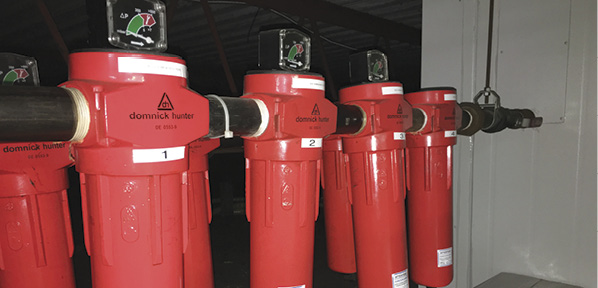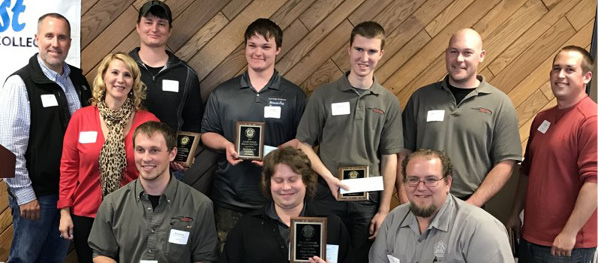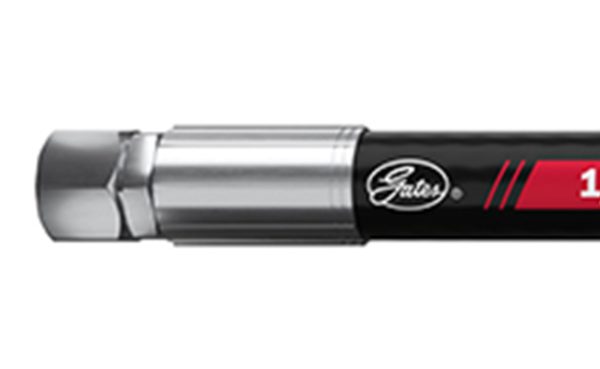Hydraulic Systems for Hydrogen-Powered Working Machines

Elements of image furnished by Adobe Stock | ZinetroN
By Rafael Cardoso, Engineering Manager, Mobile Systems and Software, Bosch Rexroth.
With technological advancements such as AI on the rise, along with more research at our fingertips, there is a growing trend toward implementing more efficient solutions in the off-highway industry. In mobile machinery, the conventional diesel engine has maintained a stronghold in the industry. In some segments, fossil fuels are being phased out as industries decrease their pollutant emissions and reassess their operating costs.
Hydrogen has emerged as a promising leader for viable alternatives to fuel cells and battery electric technologies due to its combustion properties. According to a study of energy-efficient machines, hydrogen spark-ignited engines can achieve brake thermal efficiencies of up to 45% under specific operating conditions.
In heavy-duty on-road engines, the impacts of hydrogen engines on sustainability show a significant reduction in greenhouse gas emissions while maintaining cost-effectiveness. Hydrogen can have a very positive impact on greenhouse gas emissions. Adoption of these advanced solutions will require a holistic adaptation of the entire system rather than a simple plug-and-play component replacement; this can seem daunting to original equipment manufacturers (OEMs). Off-road vehicles including excavators and wheel loaders can be improved by this shift, as proven by research and development initiatives focused on hydrogen integration.
Hydrogen Combustion Engine Application Challenges
Stoichiometric, spark-ignited hydrogen combustion engines have been shown to respond twice as slowly as a conventional diesel engine during torque transients. They also exhibit a 30% lower peak torque. Due to these characteristics, implementing hydrogen engines in off-highway vehicles presents challenges, particularly with their duty cycle’s high transient loads. To match the performance of a diesel engine In these applications, a hydrogen combustion engine would need to be significantly larger, yielding a substantial increase in overall system costs. The performance limitations of hydrogen combustion engine technology underscore the need for a comprehensive systems approach; a combination of hydraulics and control systems architectures addresses these challenges effectively.
Fluid Power Architecture as a Key Factor for Emerging Technology Adoptions
Multi Pressure Rail (MPR) system adaptations are another previously studied hydraulic architecture that provides adaptable solutions by controlling the pressure of each rail. The system integrates multiple pressure rails, enabling various components of a hydraulic system to operate at different pressure levels as required. The MPR system employs a pressure control logic to regulate hydraulic functions by connecting pumps and motors to actuators through two pressure rails.
This architecture utilizes proportional valves to minimize pressure differentials, and each rail is equipped with hydraulic accumulators to recover energy during overload conditions, e.g. boom lowering while mitigating power demand transients. This system is optimal for operators seeking to support system efficiency and reduce energy losses such as fuel consumption in machinery.
Considering high, medium, and low-pressure rails, a switching valve can connect the supply line and return line to the defined pressure rails based on commands from the supervisory controller. A metering stage control valve can also control the speed of the actuator. This indicates that different combinations of inlet/outlet pressure levels with MPR systems can provide multiple output torque and force ranges.
In the MPR, different from a conventional fluid power system, the supply pump is not set to match a commanded flow, but rather to establish a commanded pressure. This difference is a primary advantage of a constant pressure system’s ability to decouple the supply side from actuators, thus facilitating lower engine speeds regardless of current power demands. Additionally, potential and kinetic energy from these actuators can be captured and stored within the pressure rail for later use.
Frequently, the solution lies not in relying on a single component, but rather in adopting a system-level perspective. The challenges associated with hydrogen engines, particularly the high torque demands required for off-highway vehicles, can be addressed by considering the entire hydraulic system in a holistic manner. In this context, an MPR system would be an excellent fit for hydrogen-powered construction equipment and off-highway applications
Finally, an MPR system could be designed to maintain compatibility with existing state-of-the-art machinery. This implementation presents a significant opportunity to address and meet the demanding torque requirements of wheel loaders, graders, excavators, and other offroad vehicles (ORVs) when paired with a hydrogen combustion engine. Previous studies show that overall efficiency can improve as much as 50% when using MPR systems in a planter application compared to current commercial solutions.
Future Market Opportunities
There is a pressing need for the offroad vehicle industry to develop additional breakthrough technologies that promote sustainability in future vehicles. However, the market has largely favored incremental improvements, as customers tend to be risk-averse in the off-highway vehicles sector. Additionally, industry investments are strained by global challenges, including economic uncertainties and supply chain disruptions.
This skepticism doesn’t come unwarranted when navigating implementation challenges. However, the integration of technologies including hydrogen combustion engine technology and MPR systems may emerge as highly cost-effective strategies. They could have a clear, significant impact on fleets striving to achieve future emissions reduction goals in offroad vehicles, equipped with mid- and large-sized actuators suitable for forestry machinery, harvesters, graders, and pavers. The first truly viable step in the market for this innovative approach can offer so much to the industry. While hydrogen and natural gas engines offer significant potential for cutting carbon emissions, the MPR system by itself can enhance the efficiency of off-road vehicles’ hydraulics systems or electric-hydraulic hybrids.
OEMs can be hesitant about the fast-paced advancements of technology and the impact of change on their workforce and company. The simplest way to start is to take the first transitional step by trying out one of these advancements at a time rather than adopting multiple new systems all at once. This allows OEMs to gain a clearer understanding of the overall benefits. To see the big picture, OEMs can start with individual innovations and eventually combine systems for an advanced, feasible solution to outdated conventional combustion engines in the off-highway industry.







